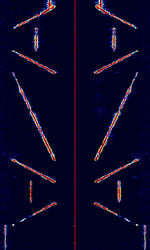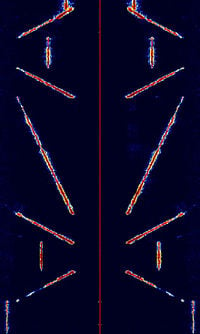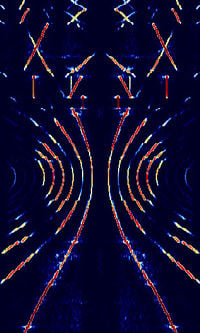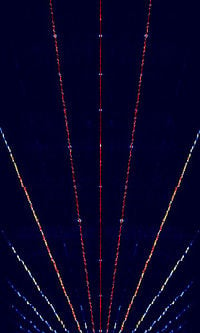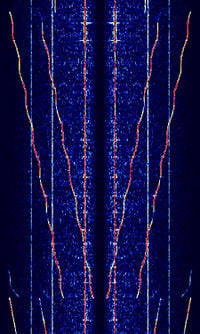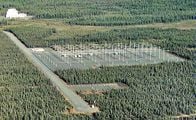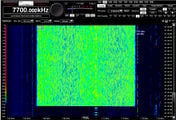High Frequency Active Auroral Research Program (HAARP)
The High Frequency Active Auroral Research Program (HAARP) is an ionospheric research program conducted at the HAARP Research Station at Gakona, Alaska. In 2014 the HAARP program was shut down and in August 2015, the ownership was transferred from the USAF to The University of Alaska Fairbanks. HAARP reopened as of early 2017 for independent researcher use.
HAARP was opened in 1993, costing US$300 million, and was operating under the United States Air Force along with the US Navy, DARPA, and the University of Alaska. The primary purpose of HAARP was to study, analyze and conduct experiments on ionospheric behavior for improving our understanding of the earth's ionosphere as well as enhancing technology for RFRadio Frequency communications.
The primary instrument at the HAARP facility is the Ionospheric Research Instrument (IRI), a high power 180-antenna strong phased array transmitter that can transmit between 2.7 MHzMegaHertz (MHz) 10^6 Hz and 10 MHzMegaHertz (MHz) 10^6 Hz at a maximum effected radiated power (ERP) of 5.1 Gigawatts, or 97.1 dBW. The waveforms found by shortwave listeners from HAARP all came from the IRI.
HAARP almost never directly transmits signals in the VLFVery Low Frequency (3-30 kHz)/ELF frequency range. The signals are generated in the ionosphere at an altitude of around 100 km, and "bounce back" to RFRadio Frequency. Some exceptions include studying polar mesospheric summer echoes using radars on 49 MHzMegaHertz (MHz) 10^6 Hz and 139 MHzMegaHertz (MHz) 10^6 Hz.
In April 2021, it was announced that a five-year, $9.3 million National Science Foundation grant will allow the University of Alaska Fairbanks Geophysical Institute to establish a new research observatory dedicated to exploring Earth’s upper atmosphere and geospace environment. This grant will allow scientists to investigate how the sun affects Earth’s ionosphere and magnetosphere to produce changes in space weather. The IRI will be the centerpiece of this newly founded observatory.
Samples[edit]
HAARP uses a wide variety of waveforms during its operation. One is a sweeping CWContinuous Wave wave that linearly increases or decreases. Another waveform are constant CWContinuous Wave tones that increment up/down at select frequencies from the center carrier. There are still other waveforms including fast carrier pulsing, slow carrier pulses, ionosonde-like sweeps, OTHOver The Horizon (very long range) radar-like waveforms, unmodulated carriers, and combinations of these together selectivity at a time.
In addition, HAARP can also operate as a pseudo-radar, transmitting very short pulses or long pulses. At one time it even transmitted Morse code that was intentionally bounced off the Moon for radio hobbyists to hear.
| Variant 1 | Variant 2 Wave |
|---|---|
| |
|
| Variant 3 Sweep | Variant 4 |
|---|---|
Commonly Used Frequencies[edit]
2750 kHzKiloHertz (kHz) 10^3 Hz, 3200 kHzKiloHertz (kHz) 10^3 Hz, 3250 kHzKiloHertz (kHz) 10^3 Hz, 4450 kHzKiloHertz (kHz) 10^3 Hz, 5600 kHzKiloHertz (kHz) 10^3 Hz, 5800 kHzKiloHertz (kHz) 10^3 Hz, 6000 kHzKiloHertz (kHz) 10^3 Hz, 6600 kHzKiloHertz (kHz) 10^3 Hz, 6800 kHzKiloHertz (kHz) 10^3 Hz, 9500 kHzKiloHertz (kHz) 10^3 Hz
Video Examples[edit]
- Oddities Station, HAARP, July 24, 2011, 0818 UTC, 2750 kHz
- HAARP on Shortwave 2750khz
- Strange HF OTH Radar or Jammer (HAARP)
- "What Haarp Sounds Like" As Discussed By Art Bell
- Oddity Station, HAARP, multiple waveforms and frequencies, June 04, 2014
- Oddities Station, HAARP, multiple waveforms, September 13, 2009, 2750 kHz
- Shortwave Radio - HAARP 5730Khz to 5900Khz Sweep
- KL4IU's Crowdfunded HAARP Experiment 3250 kHz Sept Campaign 2017
- HAARP transmission, sweeping tones, 2800 kHz, 02 December, 2018, 0140 UTC
Additional Links[edit]
- Wikipedia HAARP
- HAARP Spooks newsletter, 2001 Via WayBack Machine
- solarix HAARP
- Location of HAARP Research Station
- Chris Fallen's Offical HAARP Operation Updates Blog (No longer updated)
- UAFHAARP Official Twitter Page
- UAF Official HAARP Website
Additional Images[edit]
|
|
